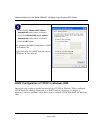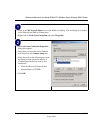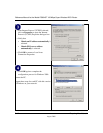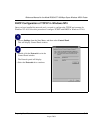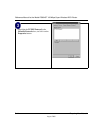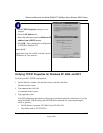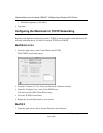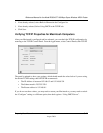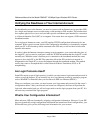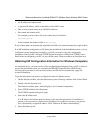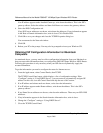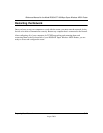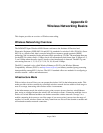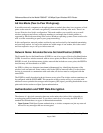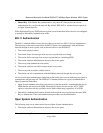
Reference Manual for the Model DG834GT 108 Mbps Super Wireless ADSL Router
C-18 Preparing Your Network
August 2004
Verifying the Readiness of Your Internet Account
For broadband access to the Internet, you need to contract with an Internet service provider (ISP)
for a single-user Internet access account using a cable modem or DSL modem. This modem must
be a separate physical box (not a card) and must provide an Ethernet port intended for connection
to a Network Interface Card (NIC) in a computer. Your router does not support a USB-connected
broadband modem.
For a single-user Internet account, your ISP supplies TCP/IP configuration information for one
computer. With a typical account, much of the configuration information is dynamically assigned
when your PC is first booted up while connected to the ISP, and you will not need to know that
dynamic information.
In order to share the Internet connection among several computers, your router takes the place of
the single PC, and you need to configure it with the TCP/IP information that the single PC would
normally use. When the router’s Internet port is connected to the broadband modem, the router
appears to be a single PC to the ISP. The router then allows the PCs on the local network to
masquerade as the single PC to access the Internet through the broadband modem. The method
used by the router to accomplish this is called Network Address Translation (NAT) or IP
masquerading.
Are Login Protocols Used?
Some ISPs require a special login protocol, in which you must enter a login name and password in
order to access the Internet. If you normally log in to your Internet account by running a program
such as WinPOET or EnterNet, then your account uses PPP over Ethernet (PPPoE).
When you configure your router, you need to enter your login name and password in the router’s
configuration menus. After your network and router are configured, the router will perform the
login task when needed, and you will no longer need to run the login program from your PC. It is
not necessary to uninstall the login program.
What Is Your Configuration Information?
More and more, ISPs are dynamically assigning configuration information. However, if your ISP
does not dynamically assign configuration information but instead used fixed configurations, your
ISP should have given you the following basic information for your account:



